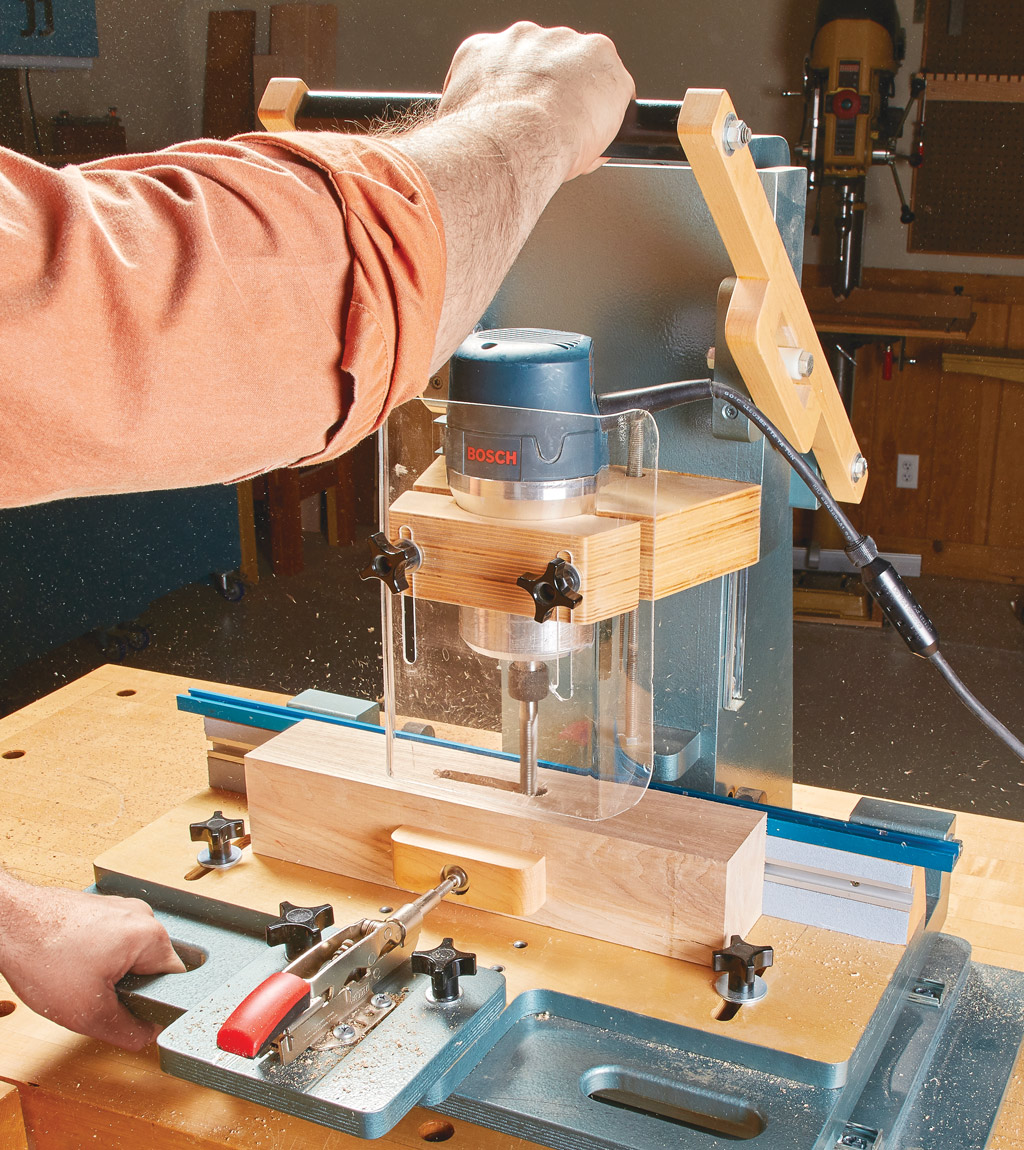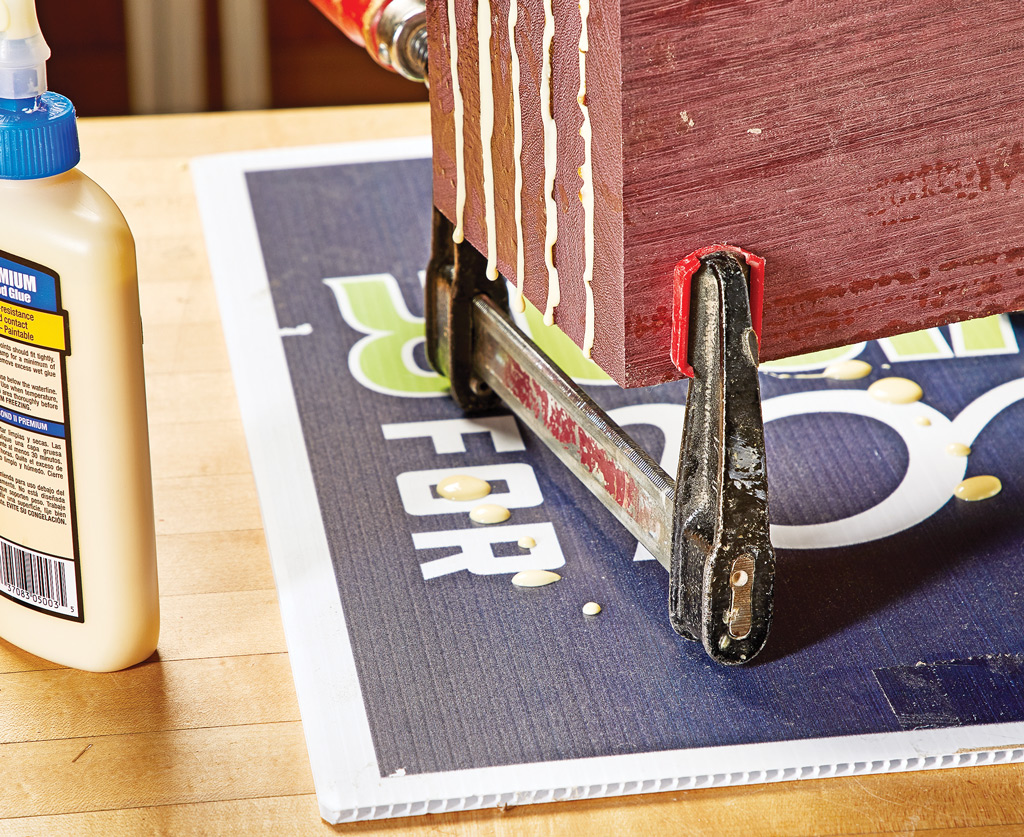
There are a lot of reasons to use veneer in a project. The main one being that you can purchase exotic or highly figured veneers for a fraction of the cost of solid boards. Veneer sheets can also be cut and matched to form stunning patterns and intricate designs. Whatever project you’re building, there’s probably a way to incorporate some veneer into the plan.

TYPES OF VENEER
The challenge comes in choosing the right veneer for the job. Veneer can be divided into two types — raw veneer and backed veneer.
Both types of veneer are available in a variety of wood species and grain patterns. So you’ll need to take that into consideration too before you make a choice.
Raw wood veneer can be either straight grained or figured, which I’ll talk about later. It’s often used to create matching patterns and works well when applied to both curved or flat surfaces in sheets. Backed veneer is generally used for covering wide, relatively flat surfaces like tabletops, chests, or other large furniture pieces.
RAW WOOD. Raw wood veneer is sliced or cut directly from the log at the mill, typically varying in thickness from 1 ⁄ 32 " and ⁄ 42 ". It’s 1 dried and sold in single sheets or in bundles of consecutive sheets, known as a flitch. The flitch, like the one you see in the main photo, will have naturally matching pieces that can be used to create interesting patterns.
The width and length of the individual pieces will depend on the species of the tree and how the log is cut (flatsawn or quartersawn, for example). Long sheets of veneer are often rolled up for shipping, as in the photo above. To cover wide surfaces, you usually have to join several sheets together.
FIGURED VENEER. One of the main reasons to use veneer is the wide range of figured veneers that are available. Two of the most common forms of figured veneers are burl and crotch (drawing at left).
A burl is abnormal growth, usually near the base of a tree. When sliced into veneer, it exhibits wild swirls and a mottled appearance.
Crotch veneer is cut from a section of the log where a limb branches off from the main trunk. It often exhibits a flame-like appearance.

These veneer types are usually sold in small pieces, like the flitch shown in the main photo. This is because the figured grain typically grows in a small section of the tree. For all but the smallest projects, you’ll probably need to join pieces together. While this takes some work, it’s also an opportunity to create patterns or designs.
FLATTENING. Burl and crotch veneers tend to curl as they dry. For this reason many veneer retailers flatten veneer by pressing it as it dries. Veneer that’s flattened at the mill is easier to work with (see the photo below).
In additon to burl and crotch veneers, there are other types of figure. Depending on the tree’s growing conditions, patterns may be seen in the grain like bird’s eye, quilted, mottled, blistered, and fiddleback figures.
Raw veneer is great for special projects. But it also requires a bit of skill and patience to use. It can be brittle to work with and has a tendency to crack or split if you’re not careful. If this sounds like too much effort, you may want to take a look at backed veneer.

BACKED VENEER. Backed veneer is raw veneer that has been matched and joined at the mill and then permanently bonded to a thin backing of foil, paper, or wood. You can find it in sheets up to 48" wide.
Some backed veneer has a heatactivated adhesive added to the backing, like that discussed in the box below. Other types need to have adhesive applied, just as you would with raw veneers.
But whichever type you choose, both are extremely easy to work with. They both come out of the box flat, matched, and ready to glue to the substrate.
The backing makes trimming and cutting the veneer easy. You can cut it with a razor blade, and you don’t have to worry about cracks or splits like you do with raw veneer.
With this many grain patterns and wood species to choose from, you’re sure to find a project that’s just waiting for a beautiful veneer design or covering.
Easy to Use: Adhesive-Backed Veneer
If the idea of gluing and clamping up veneers sounds a little intimidating, you might want to take a look at an alternative — adhesivebacked veneer.
There are two types of adhesivebacked veneers. “Peel-and-stick” veneer uses a strong, pressuresensitive adhesive. You simply peel off the paper backing and stick the veneer down (see photo at right).
The second type of veneer uses an adhesive that is heat-activated. You simply place the veneer on your project and then run an electric iron over the surface. The heat from the iron activates the adhesive, fixing it in place.















